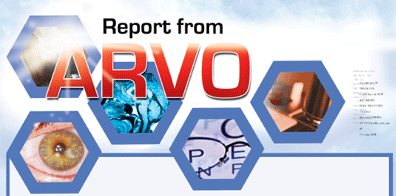
Each year, selecting the few abstracts to represent all the research presented at the annual meeting of the Association for Research in Vision and Ophthalmology (ARVO) becomes more and more difficult.
So, in our ninth annual report from ARVO, we didnt limit the field to only one dozen abstracts per subject. Instead, we increased our final tally in the fields of cornea, retina, cataract and refractive surgery, and glaucoma to nearly 20 abstracts per sectionstill only a scant sampling of the many studies presented, but it allowed each of us to present a little more of the research that we believe will impact optometry.
Heres a short overview of what youll find in the following pages:
Cornea. Associate Clinical Editor Joseph P. Shovlin, O.D., editor of Reviews Cornea and Contact Lens Q+A, reviews studies that examine the efficacy of penetrating keratoplasty as compared to deep anterior lamellar keratoplasty or Descemets stripping automated endothelial keratoplasty, those that consider use of intraocular pressure-lowering medications as a risk factor for ocular surface disease, and research that examines the effects of soft contact lens wear in children.
Retina. Mark T. Dunbar, O.D., author of Reviews Retina Quiz, offers readers a sampling of this research, including the findings of several comparisons of Avastin (bevacizumab, Genentech) to Lucentis (ranibizumab, Genentech), examinations of Lucentis efficacy vs. that of verteporfin photodynamic therapy, and new conclusions drawn from the Age-Related Eye Disease Study (AREDS).
Cataract & Refractive Surgery. Paul M. Karpecki, O.D., contributing editor and co-author of Reviews Research Review, takes readers through this years findings, which include the results of studies on the new fluoroquinolone besifloxacin, more findings regarding the effect central corneal thickness plays in the safety of refractive surgery, and reports of intraocular lens decentration and tilt in patients following cataract surgery.
Glaucoma. I report on results of studies worldwide that examine the possibilityand importanceof measuring intraocular pressure outside normal practice hours, and what such findings mean for the study and management of glaucoma. One study compared a therapeutic combination of dorzolamide and timolol to latanoprost monotherapy and a latanoprost/ timolol fixed combination. Others emphasized the need for proper dosing compliance. Such studies present data that demonstrate a disparity between practitioners and patients perceptions of noncomplianceand one study presents an aid to reduce the gap.
Youll see that weve cited each study in the following pages by their ARVO abstract number. On behalf of all the authors and of Review, I encourage you to learn more about whats happening at the cutting edge of the practice. Go to www.arvo.org.











